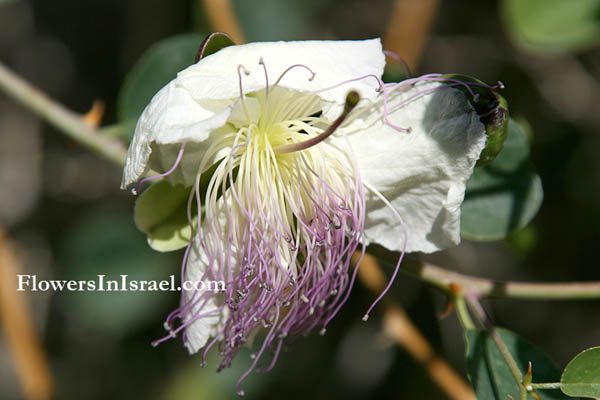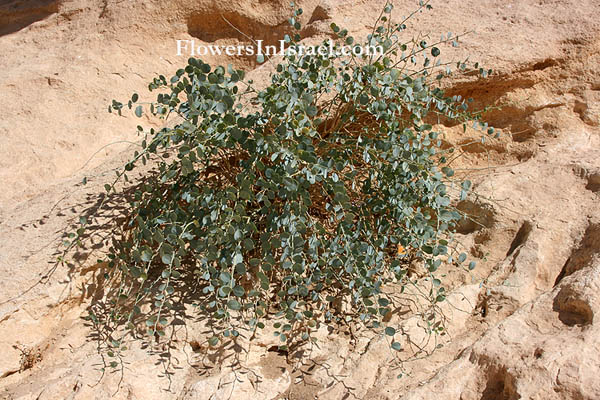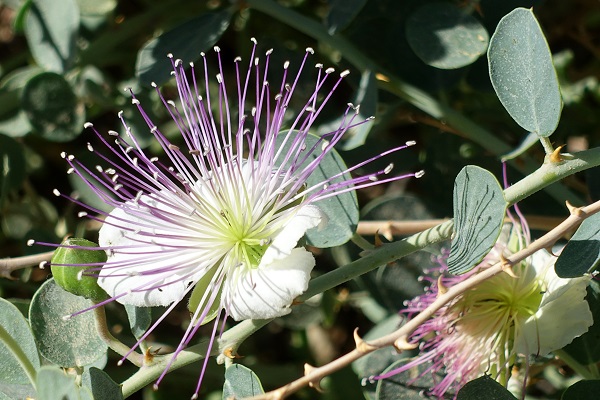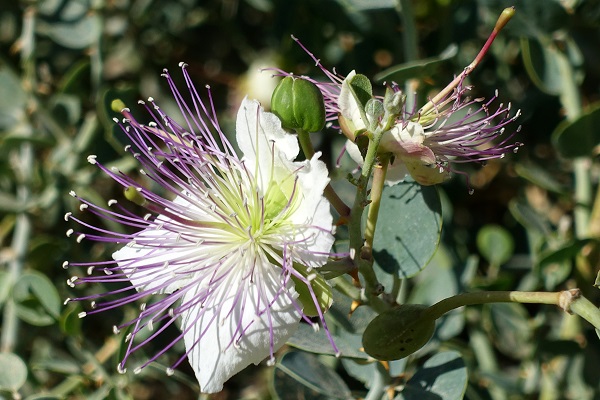Egyptian caper,
Hebrew: צלף מצרי, Arabic: قبار
| Scientific name: | Capparis aegyptia Lam. | |
| Synonym name: | Capparis deserti (Zohary) Täckh. & Boulos, Capparis sinaica Veill | |
| Common name: | Egyptian caper | |
| Hebrew name: | צלף מצרי | |
| Arabic name: | قبار | |
| Plant Family: | Capparaceae, Caper family, צלפיים |

|
| Life form: | Shrub | |
| Spinescence: | Stipules | |
| Stems: | Evergreen, spiny, trailing, deciduous shrub growing up to 1-2 m in height | |
| Leaves: | Glaucous or blue leaves, alternate, one leaf per node | |
| Flowers: | White | |
| Fruits / pods: | Narrow-ovate fruits | |
| Flowering Period: | January, February, March, April, May, June, July | |
| Habitat: | Heavy soils | |
| Distribution: | Semi-steppe shrublands, Shrub-steppes, Deserts and extreme deserts | |
| Chorotype: | Irano-Turanian - Saharo-Arabian | |
| Summer shedding: | Perennating |

Derivation of the botanical name: Capparis (latin), borrowed from Greek kapparis [κάππαρις], whose origin is unknown but probably West or Central Asia (Alkabara, kabar). Another theory links kapparis to the name of the island Cyprus (Kypros [Κύπρος]), where capers grow abundantly. Arabic kafara, to be hairy, villous. aegyptia, Egyptian. The Hebrew name: צלף, tzalaf, zalaph, which in the Bible is a proper name (Nehemia 3:30). The caper's fruit, the evyonah, is mentioned in Ecclesiastes 12:5 as a symbol of shortness of man's life, because very soon after it blossoms, the fruit scatters its seeds and the plant withers; "The almond-tree shall blossom… and the caperberry shall fail; Because man goeth to his long home…."


|